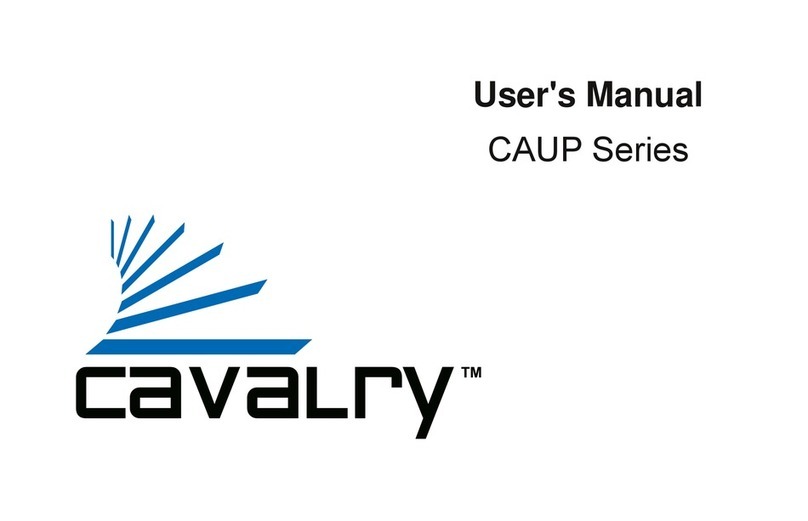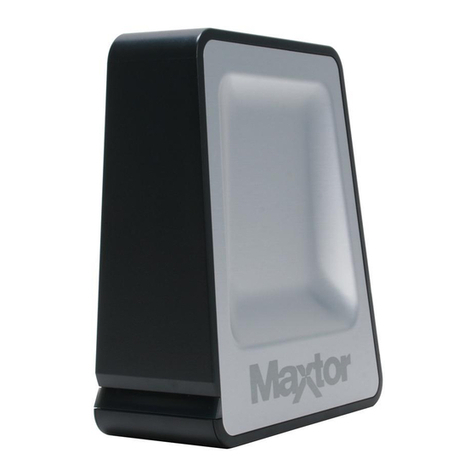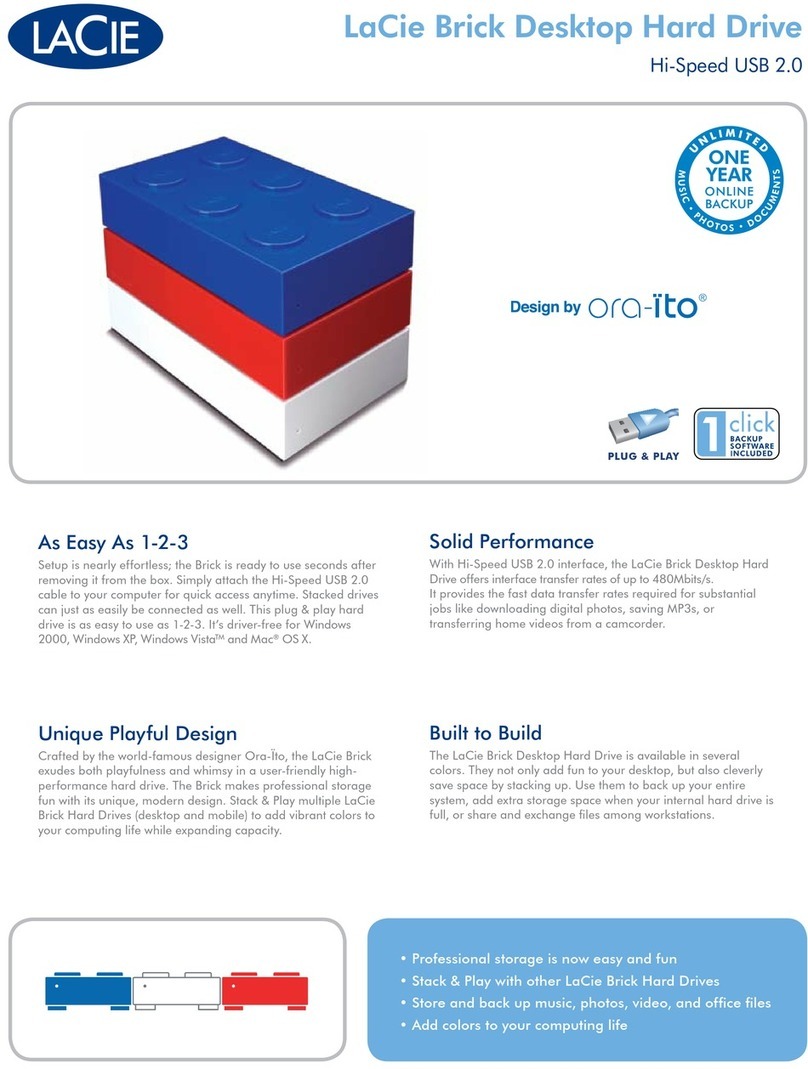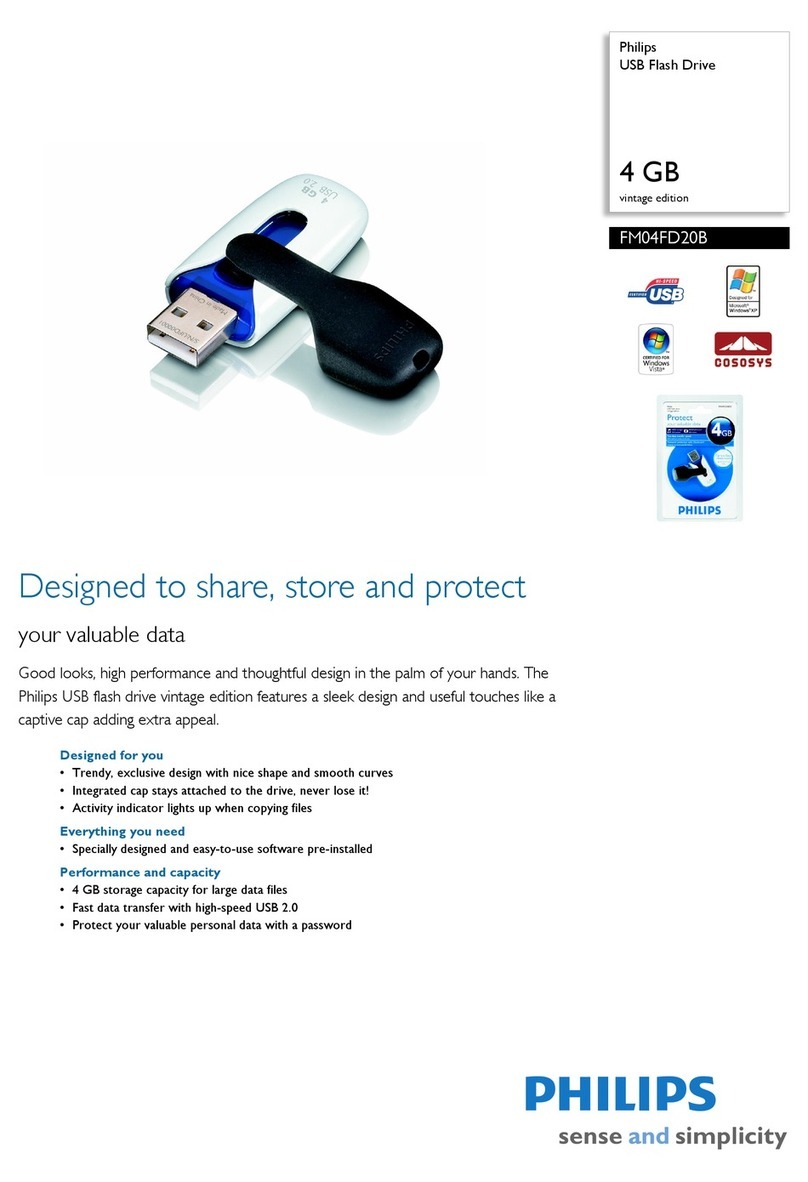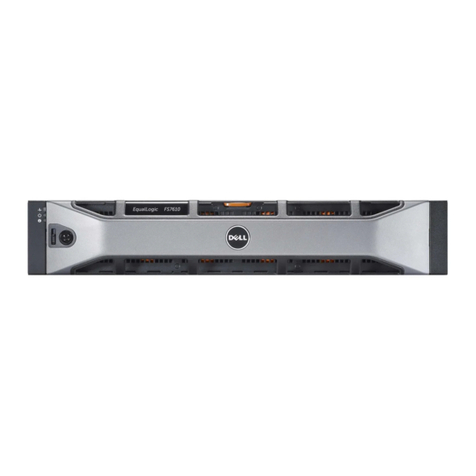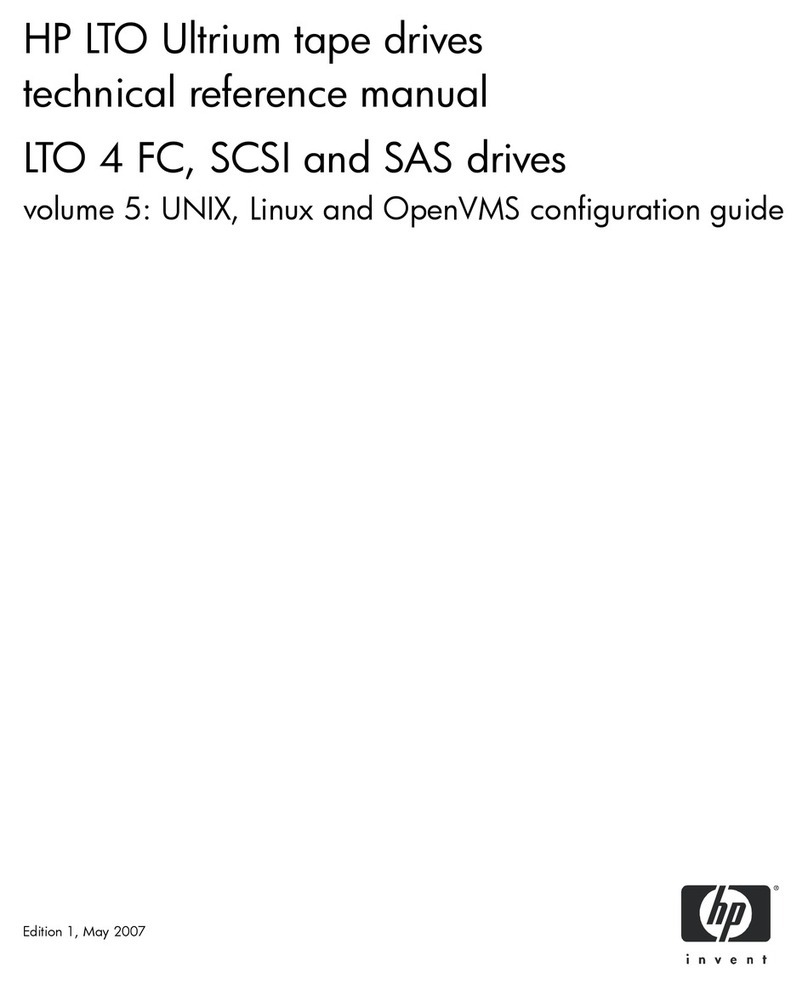Processor Technology CUTS Reference guide

CUTS, COMPUTER USERS TAPE SYSTEM
ASSEMBLY and TEST INSTRUCTIONS
Processor
Technology
Corporation
6200
Hollis
Street
Emeryville
CA
94608

PROCESSOR
TECHNOLOGY
CORPORATION
CUTS,
COMPUTER
USERS
TAPE
SYSTEM
SECTION
I
II
TITLE
INTRODUCTION
and
GENERAL
INFORMATION
1.1
Introduction
• • . • •
1.2
General
Information
1.2.1
1.2.2
1.2.3
1.2.4
1.2.5
CUTS
Description
Receiving
Inspection
Warranty
Information
Replacement
Parts
•
Factory
Service
. . •
ASSEMBLY
and
TEST
2.1
2.2
2.3
Parts
and
Components
.
Assembly
Tips
• • •
Assembly
Precautions
2.3.1
Handling
MOS
Integrated
2.3.2
Soldering
· · · · · · ·
2.3.3
Installing
and
Removing
Module
. · · · · · · ·
Circuits
· · · ·
CUTS
· · · · ·
2.3.4
Installing
and
Removing
Integrated
2.4
2.5
2.6
Circuits
· · · · · · · · · · ·
2.3.5
Use
of
Clip
Leads
· · · · · · ·
Required
Tools,
Equipment
and
Materials
Orientation
Assembly-Test
. . . • • • • •
2.6.1
Circuit
Board
Check
••••
2.6.2
Assembly-Test
Procedure
••
III
OPTION SELECTION
IV
3.1
3.2
3.3
Option
Selection
Port
Address
Selection
(DIP
Switch,
Sl)
Audio
Output
Selection
•
3.4
Data
Rate
Selection
OPERATING
PROCEDURES
4.1
Tape
Recorder
4.2
CUTS-Recorder
Interconnect
(Single
·
· ·
·
·
Recorder)
•••••...••••••••
4.3
CUTS-Recorder
Interconnect
(Two
Recorders)
••••.••••••
i
© Processor Technology Corp. 1977
CONTENTS
I-I
I-I
I-I
I-I
1-2
1-2
1-2
II-l
II-l
1I-6
1I-6
1I-6
1I-6
1I-6
1I-7
1I-7
1I-7
1I-7
1I-8
1I-9
III-l
III-l
III-l
1II-2
IV-l
IV-l
IV-l

PROCESSOR
TECHNOLOGY
CORPORATION
CUTS,
COMPUrER
USERS
TAPE
SYSTEM
SECTION
IV
V
VI
APPENDICES
TITLE
OPERATING
PROCEDURES
continued
4.4
Recorder
Adjustments
.
4.4.1
4.4.2
Volume
Control
Tone
Control
4.5
write
Operations
.••••
4.6
Read
Operations
THEORY
OF
OPERATION
5.1
5.2
5.'3
Introduction
.
Block
Diagram
Analysis
.
•••..••
Theory
of
Operation
• • • • . . . • • • •
5.3.1
Timing
• •
••
.
.•.
5.3.2
Control..
•
•••••
5.3.3
write
Mode
.•••••••
5.3.4
Read
Mode
.•.•••.•••.••
DRAWINGS
CUTS
Assembly
Drawing
•
CUTS
Schematic
• • • • • .
I
Statement
of
Warranty
II
8080
Operating
Codes
III
Standard
and
Tantalum
Dipped
Capacitor
Color
Codes
IV
Loading
DIP
Devices,
Soldering
Tips
and
Installing
Augat
Pins
V
IC
Pin
Configurations
ii
CONTENTS
IV-2
IV-2
IV-2
IV-4
IV-4
V-I
V-I
V-2
V-2
V-4
V-6
V-8
VI-l
VI-2

PROCESSOR
TECHNOLOGY
CORPORATION
CUTS,
COMPUTER
USERS
TAPE
SYSTEM
TABLES/ILLUSTRATIONS
TABLE
2-1
5-1
FIGURE
2-1
2-2
2-3
4-1
5-1
TITLE
CUTS
Parts
List
. • • • • • • • •
Strobe
Decoder
(U23)
Truth
Table
TITLE
Identification
of
components
Heat
sink
and
U7
installation
.
CUTS-transport
interconnect
cabling
• •
CUTS-recorder
interconnect
(two
recorders)
CUTS
simplified
block
diagram
• • • • • • •
iii
PAGE
II-2,3
IV-6
PAGE
II-4,5
II-9
II-18
IV-3
V-3

SECTION I
INTRODUCTION
and
GENERAL
INFORMATION
CUTS,
COMPUTER
USERS TAPE
SYSTEM
Processor
Technology
Processor
Technology
Corporation
6200
Hollis
Street
"Emeryville
CA
94608

PROCESSOR
TECHNOLOGY
CORPORATION
CUTS,
COMPUTER
USERS TAPE
SYSTEM
SECTION I
1.1
IN'rRODUCTION
This
manual
supplies
the
information
needed
to
assemble,
test
and
use
the
CUTS,
Computer
Users
Tape
System.
We
suggest
that
you
first
scan
the
entire
manual
before
starting
assembly.
Then,
make
sure
you
have
all
the
parts
and
components
listed
in
the
IIParts
List
ll
(Table
2-1)
in
Section
II.
When
assembling
the
module,
follow
the
instructions
in
the
order
given.
Should
you
encounter
any
problem
during
assembly,
calIon
us
for
help
if
necessary.
If
your
completed
module
does
not
work
pro-
perly,
recheck
your
assembly
step
by
step.
Most
problems
stem
from
poor
soldering,
backward
installed
components,
and/or
installing
the
wrong
component.
Once
you
are
satisfied
that
the
module
is
correct-
ly
assembled,
feel
free
to
ask
for
our
help.
1.2
GENERAL
INFORMATION
1.2.1
CUTS
Description
CUTS,
The
Computer
Users
Tape
System
is
a
high
speed,
simple
to
use
audio
cassette
interface
that
operates
at
300
and
1200
bps
data
rates
under
program
control.
The
recording
technique
used
is
asynchronously
Manchester
coded
at
1200
or
2400
Hz
and
is
CUTS/Byte/
Kansas
City
Standard
compatible.
Two
separate
tape
transport
control
outputs
and
two
cornmon
audio
inputs
and
outputs
are
provided
to
drive
one
or
two
recorders.
In
addition,
CUTS
has
provision
for
selecting
1)
a
low
level
audio
output
signal
for
driving
the
microphone
input
to
an
audio
recorder,
2)
a
high
level
audio
output
signal
for
driving
the
auxiliary
input
to
an
audio
recorder,
and
3)
a
5-volt
peak-to-peak
square
save
out-
put
for
driving
a
digital
recorder.
A
fully
automatic
gain
control
operates
in
the
read
mode.
Unlike
other
cassette
interfaces,
CUTS
has
absolutely
no
critical
adjustments
that
must
be
preset
or
adjusted
during
operation.
1.2.2
All
Processor
Technology
software
is
available
on
CUTS
cassettes
at
lower
cost
than
equivalent
paper
tapes.
Receiving
Inspection
When
your
kit
arrives,
examine
shipping
container
for
signs
of
possible
damage
to
the
contents
during
transit.
Then
inspect
the
contents
for
damage.
(We
suggest
you
save
the
shipping
materials
for
use
in
returning
the
module
to
Processor
Technology
should
it
become
necessary
to
do
so.)
If
your
CUTS
kit
is
damaged,
please
write
us
at
once
describing
the
condition
so
that
we
can
take
appropriate
action.
I-I

PROCESSOR
TECHNOLOGY
CORPORATION
CUTS,
COMPUTER
USERS TAPE
SYSTEM
SECTION I
1.2.3
warranty
Information
In
brief,
parts
that
fail
because
of
defects
in
materials
or
workmanship
are
replaced
at
no
charge
for
3
months
for
kits,
and
one
year
for
assembled
products,
following
the
date
of
purchase.
Also,
products
assembled
by
the
buyer
are
warranted
for
a
period
of
3
months
after
the
date
of
purchase;
factory
assembled
units
carry
a
one
year
warranty.
Refer
to
Appendix
I
for
the
complete
"Statement
of
Warranty".
1.2.4
Replacement
Parts
Order
replacement
parts
by
component
nomenclature
(DM8131
IC
or
lN2222
diode,
for
example)
and/or
a
complete
description
(680
ohm,
~
watt,
5%
carbon
resistor,
for
example).
1.2.5
Factory
Service
In
addition
to
in-warranty
service,
Processor
Technology
also
provides
factory
repair
service
on
out-of-warranty
products.
Before
returning
the
unit
to
Processor
Technology,
first
obtain
our
authorization
to
do
so
by
writing
us
a
letter
describing
the
problem.
After
you
receive
our
authorization
to
return
the
unit,
proceed
as
follows:
1.
Write
a
description
of
the
problem.
2.
Pack
the
unit
with
the
description
in
a
container
suitable
to
the
method
of
shipment.
3.
Ship
prepaid
to
Processor
Technology
Corporation,
6200
Hollis
Street,
Emeryville,
CA
94608.
Your
unit
will
be
repaired
as
soon
as
possible
after
receipt
and
return
shipped
to
you
prepaid.
(Factory
service
charges
will
not
exceed
$20.00
without
prior
notification
and
your
approval.)
1-2

SECTION
II
ASSEMBLY
CUTS,
COMPUTER
USERS TAPE
SYSTEM
Processor
Technology
Processor
Technology
Corporation
6200
Hollis
Street
Emeryville
CA
94608

PROCESSOR
TECHNOLOGY
CORPORATION
CUTS,
COMPUTER
USERS
TAPE
SYSTEM
SECTION
II
2.1
PARTS
AND
COMPONENTS
Check
all
parts
and
components
against
the
"Parts
List"
(Table
2-1
on
Page
11-2).
If
you
have
difficulty
in
identifying
any
parts
by
sight,
refer
to
Figure
2-1
on
Page
11-3.
2.2
ASSEMBLY
TIPS
1.
Scan
Section
II
in
its
entirety
before
you
start
to
assemble
your
CUTS
kit.
2.
In
assembling
your
CUTS,
you
will
be
following
a
step-
by-step
assembly
procedure.
FOLLOW
THE
INSTRUCTIONS
IN
THE
ORDER
GIVEN.
3.
Assembly
steps
and
component
installations
are
pre-
ceded
by
a
set
of
parentheses.
Check
off
each
installation
and
step
as
you
complete
them.
This
will
minimize
the
chances
of
omitting
a
step
or
component.
4.
When
installing
components,
make
use
of
the
assembly
aids
that
are
incorporated
on
the
CUTS
PC
board
and
the
assembly
drawing.
(These
aids
are
designed
to
assist
you
in
correctly
in-
stalling
the
components.)
a.
The
circuit
reference
(R3,
C10
and
U7,
for
example)
for
each
component
is
silk
screened
on
the
PC
board
near
the
location
of
its
installation.
b.
Both
the
circuit
reference
and
value
or
nomenclature
(1.5K
and
74LS08,
for
example)
for
each
component
are
included
on
the
assembly
drawing
near
the
loca-
tion
of
its
installation.
5.
To
simplify
reading
resistor
values
after
installation,
install
resistors
so
that
their
color
codes
read
from
left-to-right
and
top-to-bottom
as
appropriate
(board
oriented
as
defined
in
Para-
graph
2.5
on
Page
11-
.)
6.
Unless
specified
otherwise
in
the
instructions,
install
components--especially
disc
capacitors--as
close
to
the
board
as
possible.
7.
Should
you
encounter
any
problem
during
assembly,
call
on
us
for
help
if
needed.
11-1

PROCESSOR
TECHNOLOGY
CORPORATION
CUTS,
COMPUTER
USERS
TAPE
SYSTEM
SECTION
II
Table
2-1.
CUTS
Parts
List
INTEGRATED
CIRCUITS
1
1458
or
5558
(U6)
1
6011
(U18)
2
4013
(U3 & U4) 1
74LS04
(U24)
1
4019
(U9) 2
74LS08
(U25 &
U26)
1
4023
(Ul)
1
74LSI09
(U20)
1
4024
(UI0)
1
74LS132
(U21)
1
4027
(U2) 2
74LS136
(U14
&
U15)
1
4030
(U19)
1
74LS155
(U23)
1
4046
(Ull)
1
74LS163
(U12)
1
4049
(U22)
1
74LS175
(U13)
1
4520
(U8 ) 2
74367
(U16 &
U17)
REGULATORS
TRANSISTORS
1 7805UC
or
LM340T-5.0.
(U7 ) 3
2N2222
(Ql,
Q3
& Q4)
1
78L12
(U5)
1 2N2907 (Q5)
1
2N4360
(Q2)
DIODES
RELAYS
3
lN4148
(Dl,
D2
& D4) 2
DIP
Reed,
SIGMA
191TEIAl-55
(Kl
& K2)
1
IN5242
(D3)
II-2

PROCESSOR
TECHNOLOGY
CORPORATION
CUTS,
COMPUTER
USERS TAPE
SYSTEM
SECTION
II
Table
2-1.
CUTS
Parts
List
(Continued).
RESISTORS CAPACITORS
1
39
ohm,
2
watt,
5%
1
470
pfd,
disc
1
100
ohm,
~
watt,
5%
4
.001
ufd,
disc
2
470
ohm,
~
watt,
5%
1
.001
ufd,
Mylar
tubular
3
1.5K
ohm,
~
watt,
5%
1
.01
ufd,
Mylar
tubular
9
10
K ohm,
~
watt,
5%
19
.1
ufd,
disc
4
100
K ohm,
~
watt,
5%
2 1
ufd,
tantalum
dipped
2
150
K ohm,
~
watt,
5%
3
15
ufd,
tantalum
dipped
2 1 M ohm,
~
watt,
5%
1
2.2M
ohm,
~
watt,
5%
1
50
K ohm
Potentiometer
2
2.2K
ohm
Resistor
Network
MISCELLANEOUS
1
CUTS
PC
Board
10
Molex
Crimp
Pins
for
Female
1
Heat
Sink
Mating
Connector
11
14-pin
DIP
Socket
3
Augat
Pin
11
16-pin
DIP
Socket
1
Length
#24
Bare
Wire
1
40-pin
DIP
Socket
1
Length
Solder
1
8-position
DIP
Switch
3
6-32
x
J..z
Screw
2
Right
Angle
Molex
Connector,
3
#6
Lockwasher
Male
(Jl
&
J2)
3
6-32
Hex
Nut
2
Mating
Connector
for
Above,
1
Manual
Female
(PI
&
P2)
11-3

PROCESSOR
TECHNOLOGY
CORPORATION
CUTS,
COMPUTER
USERS TAPE
SYSTEM
TRANSISTOR
TO-IS
Package
(Metal
Can)
TRANSISTOR,
POWER
or
REGULATOR
IC
TO-220
Package
METAL
FILM PRECISION RESISTOR
(1%
Tolerance)
SECTION
II
TRANSISTOR
TO-92
Package
(Plastic)
c
CARBON
RESISTOR
5%
(gold),
10%
(silver.
See
Appendix
III
for
Color
Code
RESISTOR
NETWORK
Figure
2-1.
Identification
of
components.
11-4

PROCESSOR
TECHNOLOGY
CORPORATION
CUTS,
COMPUTER
USERS TAPE
SYSTEM
ELECTROLYTIC CAPACITOR
(Vertical
Mount)
DISC CAPACITOR
Monolythic
(left)
and
Ceramic
SECTION
II
DIPPED
TANTALUM
ELECTROLYTIC
CAPACITOR
VEI-LOW
~
BRO~N}
=~::".:~~
GREeN,
BLUE. .
'--~
\5"
.t{.+d
See
Appendix
III
for
Color
Code
MYLAR
TUBULAR
CAPACITOR
INTEGRATED
CIRCUIT,
Dual
Inline
Package
(DIP)
(6,8,14,16,24
and
40
pin)
?tNl..!
Figure
2-1.
Identification
of
componentso
11-5

PROCESSOR
TECHNOLOGY
CORPORATION
CUTS,
COMPUTER
USERS TAPE
SYSTEM
SECTION
II
2.3
ASSEMBLY
PRECAUTIONS
2.3.1
Handling
MOS
Integrated
Circuits
Many
of
the
IC's
used
in
the
CUTS
are
MOS
devices.
They
can
be
damaged
by
static
electricity
discharge.
Always
handle
MOS
IC's
so
that
gQ
discharge
will
flow
through
the
IC.
Also,
avoid
unneces-
sary
handling
and
wear
cotton--rather
than
synthetic-~clothing
when
handling
these
IC's.
2.3.2
Soldering
**IMPORTANT**
1.
Use
a
fine
tip,
low-wattage
iron,
25
watts
maximum.
2.
DO
NOT
use
excessive
amounts
of
solder.
DO
solder
neat-
ly
and
as
quickly
as
possible.
3.
Use
only
60-40
rosin-core
solder.
NEVER
use
acid-core
solder
or
externally
applied
fluxes.
4.
To
prevent
solder
bridges,
position
iron
tip
so
that
it
does
not
touch
adjacent
pins
and/or
traces
simultaneously.
5.
DO
NOT
press
tip
of
iron
on
pad
or
trace.
To
do
so
can
cause
the
pad
or
trace
to
"lift"
off
the
board
and
permanently
damage
it.
6.
The
flow
through
to
solder
bridges.
component.
CUTS
circuit
board
has
plated-through
holes.
Solder
the
component
(front)
side
of
the
board
can
produce
Check
for
such
bridges
after
you
install
each
7.
The
CUTS
circuit
board
has
an
integral
solder
mask
(a
lacquer
coating)
that
shields
selected
areas
on
the
board.
This
mask
minimizes
the
chances
of
creating
solder
bridges
during
assem-
bly.
DO,
however,
check
all
solder
joints
for
possible
bridges.
8.
Additional
pointers
on
soldering
are
provided
in
Appen-
dix
III
of
this
manual.
2.3.3
Installing
and
Removing
CUTS
Module
NEVER
install
the
CUTS
in,
or
remove
it
from
the
computer
with
the
power
on.
To
do
so
can
damage
the
module.
2.3.4
Installing
and
Removing
Integrated
Circuits.
NEVER
install
or
remove
integrated
circuits
while
power
is
applied
to
the
CUTS.
To
do
so
can
damage
the
IC.
11-6

PROCESSOR
TECHNOLOGY
CORPORATION
CUTS,
COMPUTER
USERS
TAPE
SYSTEM
SECTION
II
2.3.5
Use
of
Clip
Leads
NEVER
attach
clip
leads
to
the
top
edge
of
the
CUTS
PC
board.
To
do
so
can
short
the
+8,
+16
and
-12
V
dc
buses
to
one
another.
2.4
REQUIRED TOOLS,
EQUIPMENT
AND
MATERIALS
The
following
tools,
equipment
and
materials
are
recommended
for
assembling
and
testing
the
CUTS
Module:
1.
Needle
nose
pliers
2.
Diagonal
cutters
3.
Scredriver
4.
Sharp
knife
5.
Controlled
heat
fine
tip
soldering
iron,
25
watts
6.
60-40
rosin-core
solder
(supplied)
7.
#24
bare
wire
(supplied)
8.
Volt-ohm
meter
2.5
ORIENTATION
The
heat
sink
area
(large
foil
area)
will
be
located
in
the
upper
right-hand
corner
of
the
board
when
the
edge
connector
is
at
the
bottom.
In
this
position,
the
component
(front)
side
of
the
board
is
facing
up
and
the
solder
(back)
side
is
facing
down.
In
addition.
the
IC
legends
(Ul
through
U4,
U8
through
U15,
etc.)
will
read
from
left
to
right.
Subsequent
position
references
in
the
in-
structions
related
to
the
CUTS
PC
board
assume
this
orientation.
2.6
ASSEMBLY-TEST
Refer
to
the
assembly
drawing
in
Section
VI.
CAUTION
THE
CUTS
MODULE
USES
MANY
MOS
b~D
CMOS
INTEGRATED
CIRCUITS.
THEY
CAN
BE
DAM-
AGED
BY
STATIC ELECTRICITY DISCHARGE.
HANDLE
THESE
IC's
SO
THAT
NO
DISCHARGE
FLOWS
THROUGH
THE
IC.
AVOID
UNNECESSARY
HANDLING
AND
WEAR
COTTON--RATHER
THAN
SYNTHETIC--CLOTHING
WHEN
YOU
DO
HANDLE
THESE
IC's.
(STATIC
CHARGE
PROBLEMS
ARE
MUCH
WORSE
IN
LOW
HUMIDITY CONDITIONS.)
11-7

PROCESSOR
TECHNOLOGY
CORPORATION
CUTS,
COMPUTER
USERS
TAPE
SYSTEM
SEC'l'ION
II
2.6.1
Circuit
Board
Check
(t
Visually
check
CUTS
PC
board
for
solder
bridges
(shorts)
between
traces,
broken
traces
and
similar
defects.
Check
board
to
insure
that
the
+S-volt
line,
+16-volt
line,
+5-volt
bus,
+12-volt
bus
and
-12-volt
bus
are
not
shorted
to
one
another
or
to
ground.
Using
an
ohmmeter,
make
the
following
measurements
(refer
to
CUTS
assembly
drawing
in
Section
VI.):
(~
(~
(~
+S-volt
Line
Test.
Measure
between
edge
connector
pin
1
or
51
(left
end
of
connector)
and
pin
50
or
100
(right
end
of
connector).
There
should
be
no
continuity.
+16-volt
Line
Test.
Measure
between
edge
connector
pin
2
or
52
and
pin
50
or
100.
There
should
be
no
continuity.
S/16
Volt
Line
Test.
Measure
between
edge
connector
pin
1
or
51
and
pin
2
or
52.
There
should
be
no
continuity.
+5-volt
Bus
Test.
Measure
between
the
upper
mounting
pad
for
D2
(to
the
left
of
location
K2)
and
pin
50
or
100
of
the
edge
connector.
There
should
be
no
continuity.
+12-volt
Bus
Test.
Measure
between
upper
mounting
pad
for
C9
(in
upper
right
corner
below
CS)
and
pin
50
or
100
of
edge
connector.
There
should
be
no
continuity.
-12-volt
Bus
Test.
Measure
between
upper
mounting
pad
for
CIS
(between
U16
and
U17)
and
pin
50
or
100
of
edge
connector.
There
should
be
'no
continuity.
5/12/(-12)
Volt
Bus
Test.
Measure
between
upper
mounting
pad
for
C2l
(lower
left
corner)
and
upper
pad
for
C9,
between
upper
pad
for
C21
and
upper
mounting
pad
for
CIS,
and
between
upper
pad
for
C9
and
upper
pad
for
CIS.
You
should
measure
no
conti-
nuity
in
any
of
the
three
measurements.
If
visual
inspection
reveals
any
defects,
or
you
measure
continuity
in
any
of
the
preceding
tests,
return
the
board
to
Processor
Technology
for
replacement.
If
the
board
is
not
defective,
go
on
to
next
paragraph.
II-S

PROCESSOR
TECHNOLOGY
CORPORATION
CUTS,
COMPUTER
USERS TAPE
SYSTEM
SECTION
II
2.6.2
Assembly-Test
Procedure
Step
1.
Install
heat
sink.
position
the
large,
black
heat
sink
(flat
side
to
board)
over
the
square
foil
area
in
the
upper
right
corner.
Orient
the
sink
so
that
the
two
tri-
angles
of
mounting
holes
in
the
board
are
under
the
two
triangular
cutouts
in
the
sink.
Using
two
6-32
screws,
lockwashers
and
nuts,
attach
heat
sink
to
board.
Insert
the
screws
from
back
(solder)
side
of
board.
(See
Figure
2-2.)
Step
2.
Install
U7
(7805UC
or
LM340T-5.0).
position
u7
over
left-hand
cutout
in
heat
sink
and
observe
how
the
leads
must
be
bent
to
fit
the
mounting
holes.
Note
that
the
center
lead
(3)
must
be
bent
downwards
at
a
point
approximately
0.2
inches
further
from
the
body
than
the
other
two
leads.
Bend
the
leads
so
that
no
contact
is
made
with
the
heat
sink
when
U7
is
flat
against
the
sink
and
its
mounting
hole
is
aligned
with
the
hole
in
the
sink.
Fasten
U7
to
sink
using
a
6-32
screw,
lockwasher
and
nut.
Insert
screw
from
back
(solder)
side
of
.board.
Solder
and
trim
leads.
(Refer
to
Figure
2-2.)
.
Heat
Upper
right-hand~
corner
of
board
@
I
~
J
•.
~
,~.
c..--U7
Figure
2-2.
Heat
sink
and
u7
installation.
II-9

PROCESSOR
TECHNOLOGY
CORPORATION
CUTS,
COMPUTER
USERS TAPE
SYSTEM
SECTION
II
(W{
Step
3.
Install
male
Molex
right
angle
connectors
in
loca-
tions
Jl
and
J2.
Position
connector
with
longer
pins
facing
the
top
of
the
board,
insert
leads
in
mounting
holes
and
-
solder.
(v(
Step
4.
Install
diodes
Dl,
D2
and
D4
(lN4148)
l
respective
locations.
position
Dl
and
D2
with
band
mark
(cathode)
at
the
top
and
position
D4
in
their
their
dark
with
its
band
!
at
the
right.
Solder
and
trim
leads.
(')
step
5.
Install
diode
D3
(lNS242)
in
its
location.
Posi-
tion
D3
with
its
dark
band
mark
,(cathode)
at
the
right.
(~
(~
Step
6.
Install
transistors
Ql,
Q3
and
Q4
(2N2222)
in
their
respective
locations.
position
Ql
with
its
emitter
lead
(closest
to
tab
on
can)
at
the
top
and
its
base
lead
at
the
left.
Position
both
Q3
and
Q4
with
their
emitter
leads
at
the
right
and
their
base
leads
at
the
top.
Insert
leads
and
push
straight
down
on
transistor
until
it
is
3/16"
above
the
surface
of
the
board.
Solder
and
trim
leads.
Step
7.
Install
transistor
Q2
(2N4360)
in
its
location.
position
Q2
with
its
flat
side
at
the
bottom,
insert
leads
and
push
straight
down
on
transistor
until
it
is
3/16"
above
the
surface
of
the
board.
Solder
and
trim
leads.
(
~
Step
8.
Install
transistor
QS
(2N2907)
in
its
location.
Position
QS
with
its
emitter
lead
(closest
to
tab
on
can)
at
the
right
and
its
base
lead
at
the
top.
Insert
leads
and
push
straight
down
on
transistor
until
it
is
3/16"
above
the
surface
of
the
board.
Solder
and
trim
leads.
(~
Step
9.
Install
all
resistors
in
numerical
order
in
the
in-
dicated
locations.
Bend
leads
to
fit
distance
between
mount-
ing
holes,
insert
leads,
pull
down
snug
to
board,
bend
leads
outward
on
solder
(back)
side
of
board,
solder
and
trim.
LOCATION
VALUE
(ohms)
COLOR
CODE
(~
Rl
100
K
brown-black-yellow
( , ) R2
10
K
brown-black-orange
( ) R3
1.SK
brown-green-red
( ) R4
10
K
brown-black-orange
C
RS
1.SK
brown-green-red
( R6
1.SK
" " "
(
R7
10
K
brown-black-orange
( R8
150
K
brown-green-yellow
( . R9
10
K
brown-black-orange
~~
RIO 1 M
brown-black-green
Rll
10
K
brovm
-black-orange
Continued
on
Page
II-II.
11-10

PROCESSOR
TECHNOLOGY
CORPORATION
CUTS,
COMPUTER
USERS
TAPE
SYSTEM
Step
9
continued.
LOCATION
~d~
~i~
( -
R14
( .
R15
R16
R17
R18
R19
R20
(
.)
R2l
j!m
(:,r
VRI
VALUE
(
ohms)
2.2M
10
K
150
K
10
K
470
100
100
K
K
K
10
10
470
39,2
watt
100
K
100
K
1 M
50
K
SECTION
II
COLOR
-CODE
red-red-green
brown-balck-orange
brown-green-yellow
brown-black-orange
yellow-violet
brown
brown-black-brown
brown-black-yellow
brown-black-orange
II II
II
yellow-violet-brown
orange-white-black
brown-black-yellow
II
II
II
brown-black-green
Potentiometer
"A
Step
10.
Install
resistor
networks
RXI
and
RX2
(2.2K
ohms)
in
their
respective
locations.
Position
RXI
so
that
the
dot
on
its
package
is
at
the
right
end.
Position
RX2
with
its
dot
at
the
left
end.
CAUTION
THESE RESISTOR
NETWORKS
ARE
DELICATE.
HANDLE
WITH CARE.
( )
Step
11.
Install
the
five
tantalum
capacitors
in
the
fol-
lowing
locations.
Take
care
to
observe
proper
values
and
the
correct
orientation.
,
LOCATION
VALUE
(ufd)
ORIENTATION
l~
C7
15
11+11
lead
left
C8
15
11+11
lead
top
left
~
·f
C21 1
11+11
lead
top
C24
15
11+11
lead
right
(t%
C29 1
11+11
lead
top
( )
Step
12.
Install
the
following
capacitors
in
the
indicated
locations.
Take
care
to
observe
the
proper
value
and
type
for
each
installation.
Bend
leads
outward
on
solder
(back)
side
of
board,
solder
and
trim.
Continued
on
Page
11-12.
II-II

PROCESSOR
TECHNOLOGY
CORPORATION
CUTS,
COMPUTER
USERS
TAPE
SYSTEM
SECTION
II
(
JJ)
(
(
(
, (
'-
(
(
( )
(
Ii
)
( )
( )
(
(-
( )
( . )
( )
(
(
(
('
)
(~)
( )
( . )
( )
un
(If
)
(J
Step
12
continued.
Disc
capacitor
leads
are
usually
coated
with
wax
during
the
manufacturing
pro-
cess.
After
inserting
leads
through
mounting
holes,
remove
capacitor
and
clear
the
holes
of
any
wax.
Re-insert
and
install.
LOCATION
VALUE
(ufd)
Cl
.1
C2
.1
C3
.1
C4
.01
C5
.1
C6
.1
C9
.1
CIO
.1
Cll
.001
C12
.1
C13
.1
C14
.001
C15
.1
C16
.1
C17
.1
C18
.1
C19
.1
C20
.001
C22
.001
C23
.1
C25
.001
C26
.1
C27
.1
C28
.1
C30
.1
C31
470
pfd
Disc
II
II
Mylar
tubular
Disc
Mylar
tubular
Disc
II
II
II
II
Step
13.
Install
Augat
pins
in
mounting
holes
A,
Band
C.
(These
three
holes
are
located
to
the
left
of
U16,
just
below
the
lower
mounting
hole
for
R17.)
NOTE
You
will
find
it
helpful
to
hold
the
board
between
two
objects
so
that
it
stands
on
edge.
Continued
on
Page
11-13.
11-12
Table of contents
Popular Storage manuals by other brands

Thermo Scientific
Thermo Scientific Cryo 740 Series Operating and maintenance manual
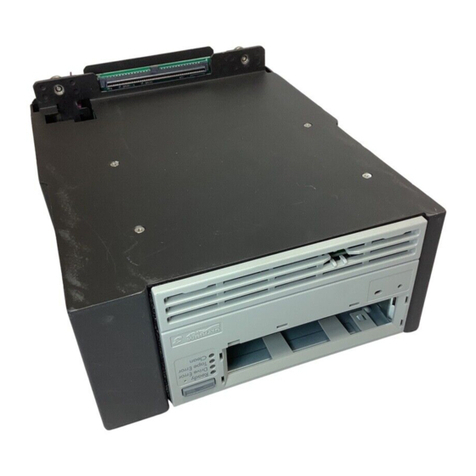
Compaq
Compaq StorageWorks ESL9000 Series installation guide
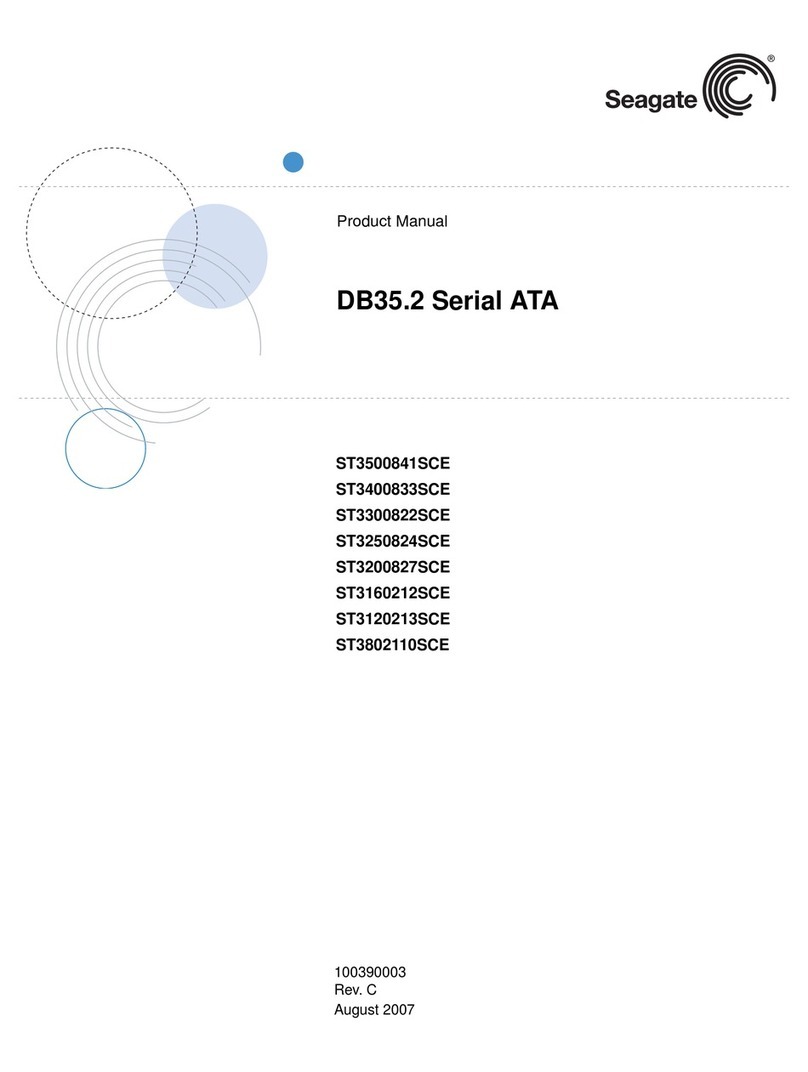
Seagate
Seagate DB35.2 product manual
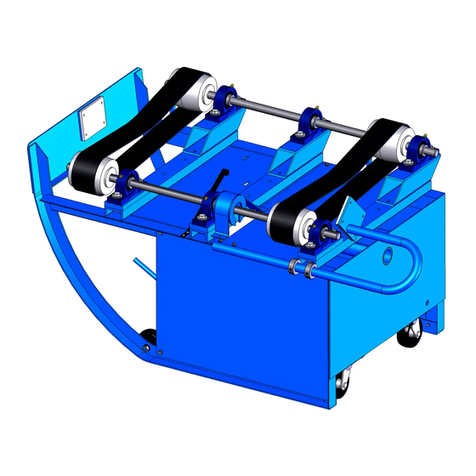
morse
morse 201B Series Operator's manual
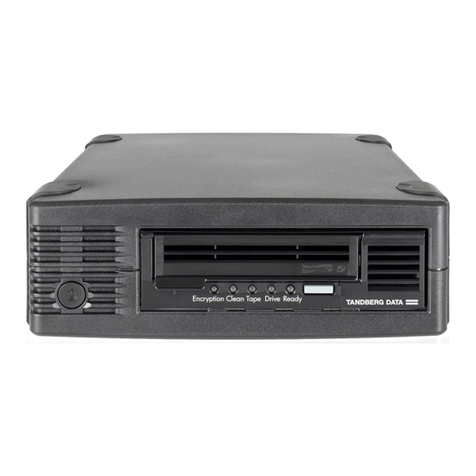
Tandberg Data
Tandberg Data LTO-5 user guide
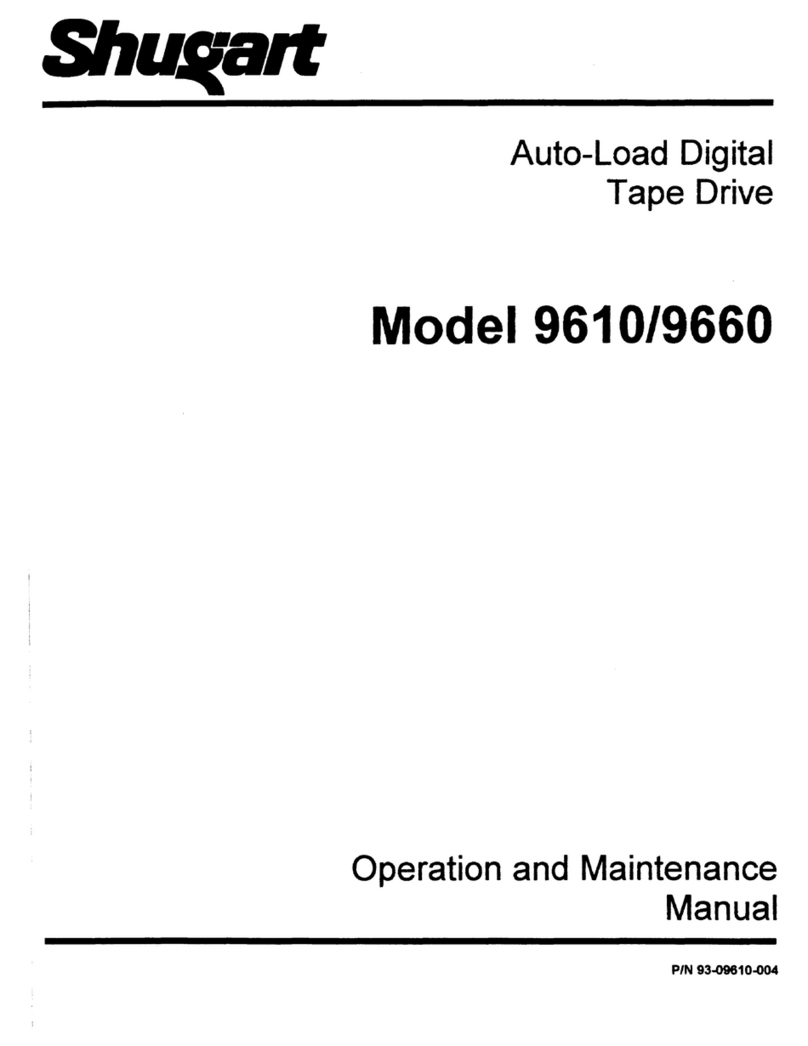
Shugart
Shugart Kennedy 9610 Operation and maintenance manual
